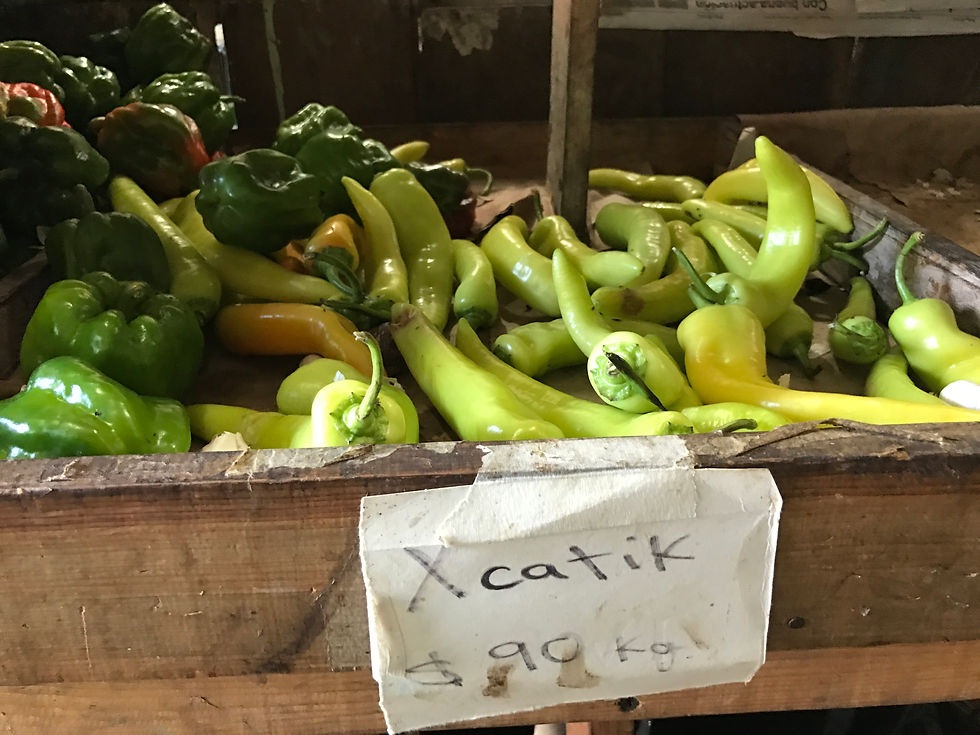
When I have a bad day in the kitchen it’s usually really bad. Like a couple of years ago when a fire truck pulled up to the house with lights flashing and siren blaring. No fire…just a misunderstanding between my cast iron skillet and our new alarm system, unfortunately the latter is connected to the county’s 911 center. Everyone knows, apparently except me, that using a low smoke-point oil to sear a steak in a really hot cast iron skillet over high heat isn’t going to end well. Oh, and pro tip…when the phone rings after your smoke alarm goes off, you should answer it. I learned that one the hard way. Fast forward to my latest culinary failure which is the focus of this article. This failure came about as a result of a four-year quest to find and recreate a very special Mexican soup. Actually it is a very common Mexican soup made with a very special Mexican ingredient, the xcatic pepper. I first tasted it when Janet and I were on a whirlwind tour of all-inclusive resorts in Cancun back in 2016. One of the properties we toured offered us a lunch made of dishes their chefs borrowed from their home kitchens in the Yucatan. The meal was delicious, but the standout dish for me was xcatic bisque, named for the local xcatic peppers it was made from. It was so exquisite I knew someday I would recreate it. Or at least attempt to. Four years later I was ready. My kitchen skills progressed since the near kitchen fire, but the biggest challenge for me with this dish wasn’t technique. It was the fact that it required xcatic peppers, and the only place you can get xcatic peppers is a small portion of the Yucatan known as Merida. In the grand scheme of things does the type of pepper you use make a difference? Actually, it does. Versions of this traditional Mayan soup that I’ve run across here in the states substitute Hungarian Wax peppers or even habaneros for xcatics, but neither is close to the heat and complex flavor profile of xcatic peppers.
The town of Merida is about 300 km west of Cancun, and as luck would have it on a subsequent trip to Cancun I befriended one of the staff members of the resort we stayed at who told he could get me some xcatic peppers. When he told me about his “source” he lowered his voice somewhat conspiratorially and told me if I could wait a few days, and was willing to pre-pay him in cash, he could hook me up with some xcatics to take home with me. We agreed on $20 US which I gave him on the spot, and we arranged to meet again in three days’ time. I fully expected to be $20 poorer with no xcatic peppers to show for it, but three days later there he was at the appointed time and place with the goods. It turns out his source was his mother who lived near Merida and grows xcatic peppers in her garden. What he brought me was packaged xcatic peppers that his mother uses from a local produce when hers aren’t yet ripe. Like the raw peppers, the packaged xcatic isn’t exported so I was glad to have it. Even more so since it meant I wouldn’t run afoul of the Department of Agriculture regulations on my return to the U.S. The dogs they use my look like cute beagles, but they can turn really mean if you try to sneak any produce in your luggage.
I was confident in my ability to reconstruct the dish, perhaps even a bit cocky about it since I was armed with nothing more than a small supply of packaged xcatic peppers and my memory of how the dish tasted. I remembered the soup I had in Cancun to be a creamy bisque-like dish with lots of earthy flavors, so I started with a recipe for leek and celery root bisque.
I sauteed the xcatics, leeks, celery root, a bunch of aromatics and some other stuff in EVOO for a few minutes, then transferred everything to a small stock pot along with a quart and a half of chicken stock. I simmered it for about two hours adjusting the flavors as I went along. It simmered, I sampled. The flavor went from the stale taste of a low-sodium boxed chicken stock to a delicious broth as the flavors from the xcatic peppers worked their magic, and then it made the jump to next level yummilicious as the peppers kicked in their heat and rich earth notes. It was a promising beginning. And then I screwed it all up. After letting all of my ingredients simmer for a couple of hours while the flavors infused into the stock, I proceeded to blend the mixture and then filter out the pulp. Big mistake. Filtering out the pulp took away all the flavor. You kinda know a dish is an epic failure when the garnish is the best part. Time for take out.
I’ve since found out the recipe I was trying to reconstruct was a bisque version of a classic Mayan recipe, Sopa de Lima. And as it turns out, the xcatic peppers aren’t the only hard to find local ingredient. The Mayan dish also uses the Yucatan lima fruit, which is a local citrus hybrid offering a unique blend of the tang of Meyer lemon and a sweet key lime. In fact, it is the lima fruit that gives the dish its name, but to my palate the xcatic pepper give the dish its soul.
Now that I have a recipe I need to find my source in Cancun to get more xcatic peppers. I wonder if he could score me some lima fruit as well? That airport dog is really going to like me on that trip!
(Originally posted on 10 Nov 2020).


Comments